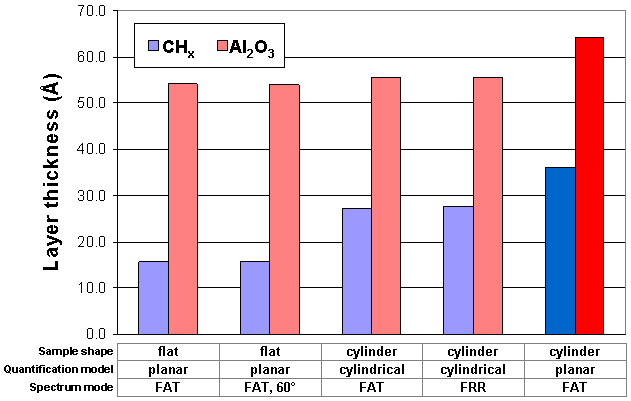
XPS MultiQuant |
Application Examples |
A flat aluminium foil was measured at 0 and 60° take-off angles and the thickness of the oxide and contaminant layers were calculated by the regular planar model. Subsequently the same foil was spooled, to form tiny cylinders, while preserving the same thickness of the oxide layer. Several of these cylinders were tightly assembled by sticking them to a flat sample holder and measured at 0° take-off angle with FAT and FRR spectrometer modes.

The layer thickness was calculated by the Layers-on-Cylinder model, resulting the same thickness for the oxide layer as done by the Layers-on-Plane model for the flat arrangement. During the sample manipulation, the thickness of the contamination layer inevitably increased slightly but as it was taken into account, it has not altered the calculated thickness of the oxide layer.

The validity of the proposed calculation is approved by the excellent agreement of the thickness values of the oxide layers. Conversely, when the planar model was applied to the cylindrical samples, the thickness of the layer was overestimated by more than 15 %. This way of testing of the model is based on relative comparison and not perturbed by any uncertainties of other terms of the calculations, e.g., cross section, IMFP, analyser transmission, etc.
M. Mohai, I. Bertóti:
Calculation of Overlayer Thickness on Curved Surfaces Based on XPS Intensities.
Surf. Interface Anal. 36, 805 (2004).